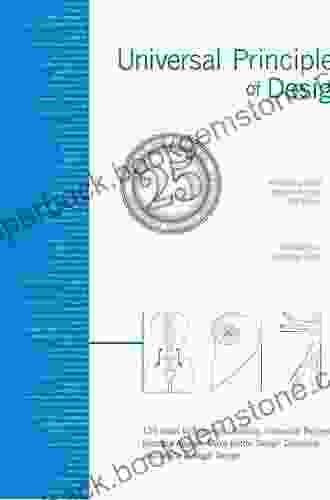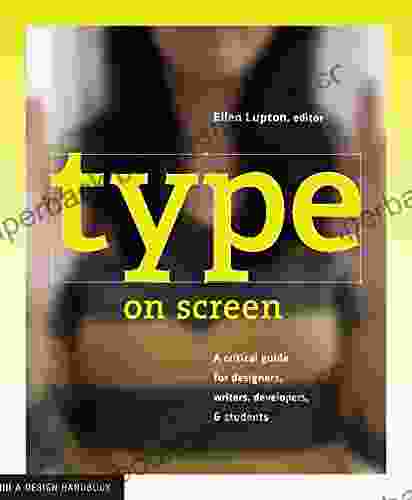Universal Principles of Design: Revised and Updated

Design, in its various forms, is a ubiquitous aspect of our lives. From the products we use to the spaces we inhabit, design shapes our experiences and influences our perceptions. Throughout history, designers and artists have sought to understand the underlying principles that govern effective and aesthetically pleasing design.
The "universal principles of design" are a collection of fundamental concepts that have guided countless designers across disciplines for centuries. These principles provide a framework for understanding how visual elements can be combined to create visually appealing and functional designs. In this article, we will explore these timeless principles, examining their origins and applications in both traditional and modern design practices.
The concept of design principles can be traced back to ancient Greece, where philosophers like Plato and Aristotle discussed the importance of balance, symmetry, and proportion in art and architecture. These ideas were further developed during the Renaissance period, when artists like Leonardo da Vinci and Michelangelo applied mathematical principles to their work to achieve harmony and realism.
4.7 out of 5
| Language | : | English |
| File size | : | 38092 KB |
| Text-to-Speech | : | Enabled |
| Screen Reader | : | Supported |
| Enhanced typesetting | : | Enabled |
| Word Wise | : | Enabled |
| Print length | : | 280 pages |
In the 19th century, the Arts and Crafts movement emphasized the importance of functionality and craftsmanship in design. Designers like William Morris believed that objects should be both beautiful and practical, leading to a revival of traditional techniques and materials.
The 20th century saw the emergence of modernism, which emphasized simplicity, clarity, and functionality in design. Bauhaus designers like Walter Gropius and Ludwig Mies van der Rohe developed a set of design principles that focused on the use of geometric shapes, primary colors, and clean lines.
Over the centuries, certain principles of design have emerged as universally applicable, regardless of the medium or style. These principles provide a foundation for understanding how visual elements can be combined to create effective and visually appealing designs.
Balance refers to the distribution of visual weight within a design. It ensures that the design feels stable and visually appealing. There are three types of balance:
- Symmetrical balance: The elements are evenly distributed on both sides of a central axis.
- Asymmetrical balance: The elements are arranged in a way that creates a sense of visual interest and dynamism.
- Radial balance: The elements are arranged around a central point, creating a sense of unity and cohesion.
Contrast refers to the difference between two or more elements in a design. It can be created through the use of color, value, shape, or size. Contrast helps to create visual interest and hierarchy, guiding the viewer's eye through the design.
Emphasis refers to the element or area in a design that draws the viewer's attention. It can be created through the use of contrast, size, color, or placement. Emphasis helps to establish a focal point and create a sense of visual hierarchy.
Proportion refers to the relationship between the sizes of different elements in a design. It helps to create visual harmony and balance. Proportion can be achieved through the use of mathematical ratios or by relying on visual judgment.
Rhythm refers to the regular repetition of elements in a design. It can be created through the use of color, shape, or texture. Rhythm helps to create visual interest and movement, guiding the viewer's eye through the design.
Unity refers to the sense of coherence and completeness in a design. It is achieved when all the elements work together to create a visually pleasing and meaningful whole. Unity can be achieved through the use of color, shape, texture, and repetition.
The universal principles of design continue to be relevant and applicable in the 21st century across various design disciplines, including:
- Graphic design: Creating visual content for print, digital, and web.
- Web design: Designing and developing websites and online applications.
- Product design: Creating physical products for consumer and industrial use.
- Interior design: Designing spaces for living, working, and public use.
- Fashion design: Designing clothing and accessories.
Understanding and applying these principles can help designers create visually appealing, functional, and meaningful designs that meet the needs of users and clients.
4.7 out of 5
| Language | : | English |
| File size | : | 38092 KB |
| Text-to-Speech | : | Enabled |
| Screen Reader | : | Supported |
| Enhanced typesetting | : | Enabled |
| Word Wise | : | Enabled |
| Print length | : | 280 pages |
Do you want to contribute by writing guest posts on this blog?
Please contact us and send us a resume of previous articles that you have written.
 Best Book
Best Book Page Flip
Page Flip Bookshelf
Bookshelf Literary loom
Literary loom Chapter
Chapter Bookish
Bookish PageTurner
PageTurner Bibliophile
Bibliophile Story
Story Inkwell
Inkwell Bookworm
Bookworm Labyrinth
Labyrinth Plot Twist
Plot Twist Prose
Prose Paperback
Paperback Storyteller
Storyteller Sanctuary
Sanctuary Fiction
Fiction Reading
Reading Chronicle
Chronicle Read
Read Mark Tufo
Mark Tufo Deirdre Slattery
Deirdre Slattery Gary Wasserman
Gary Wasserman Katja Petrowskaja
Katja Petrowskaja Beth Tondreau
Beth Tondreau Bil Donovan
Bil Donovan Harmon Cooper
Harmon Cooper Dana Fox
Dana Fox Lena Corwin
Lena Corwin Dean Koontz
Dean Koontz George Schindler
George Schindler Michael Chatfield
Michael Chatfield Bernice L Mcfadden
Bernice L Mcfadden William Alexander
William Alexander Kevin Hart
Kevin Hart Betsy Beier
Betsy Beier Michael Haag
Michael Haag Bernth Lindfors
Bernth Lindfors William Ellis
William Ellis Ben Eastham
Ben Eastham Laurie Gough
Laurie Gough Robin Cormack
Robin Cormack Simon Turney
Simon Turney Stuart Williams
Stuart Williams Koloman Moser
Koloman Moser Ottessa Moshfegh
Ottessa Moshfegh Ruth Silvestre
Ruth Silvestre Kyle Froman
Kyle Froman Eliot Greenspan
Eliot Greenspan Dave Hickey
Dave Hickey Diane Gensler
Diane Gensler Bill Bensley
Bill Bensley Veda Austin
Veda Austin George Lopez
George Lopez Maxime J Durand
Maxime J Durand Richard L Leza Sr
Richard L Leza Sr Individual Way
Individual Way Becky Chambers
Becky Chambers Tim Stokes
Tim Stokes Jennie Smallenbroek
Jennie Smallenbroek Becky Stephen
Becky Stephen Dalili
Dalili Talia Hibbert
Talia Hibbert Carol Huber Cypher
Carol Huber Cypher Norman Lee
Norman Lee Lucinda Fleeson
Lucinda Fleeson Peter Inglis
Peter Inglis Barbara Raue
Barbara Raue Colin Falconer
Colin Falconer Ashley Jaquavis
Ashley Jaquavis Robert Muirhead
Robert Muirhead Sandra Duran Wilson
Sandra Duran Wilson Brad Bussie
Brad Bussie Mary Peters
Mary Peters Sara Boccaccini Meadows
Sara Boccaccini Meadows Helen Thorpe
Helen Thorpe Mateo Askaripour
Mateo Askaripour Sarah Mirk
Sarah Mirk Peter Ustinov
Peter Ustinov Eddie Chambers
Eddie Chambers Hillary Jordan
Hillary Jordan Jonathan Strahan
Jonathan Strahan Melissa Rivers
Melissa Rivers Mary Lou Andre
Mary Lou Andre Laurent Bolard
Laurent Bolard Pam Flowers
Pam Flowers Diane Tuckman
Diane Tuckman F Scott Fitzgerald
F Scott Fitzgerald Gavin Maxwell
Gavin Maxwell John Muir
John Muir Basil Johnston
Basil Johnston Shirtaloon
Shirtaloon Joanne Hutchinson
Joanne Hutchinson David Fisher
David Fisher Blaise Corvin
Blaise Corvin Jason Sperb
Jason Sperb Chevonne Clarke Bryan
Chevonne Clarke Bryan Yoshitaka Amano
Yoshitaka Amano Michael Winter
Michael Winter S L Rowland
S L Rowland Terese Marie Mailhot
Terese Marie Mailhot Loring M Danforth
Loring M Danforth Steve Berry
Steve Berry J C Sum
J C Sum Bobby Brown
Bobby Brown Eva Tulene Watt
Eva Tulene Watt Patricia Sands
Patricia Sands Barbara Casey
Barbara Casey Lexi Sundell
Lexi Sundell Kerry Bogert
Kerry Bogert Bj Wane
Bj Wane Sarah Hepola
Sarah Hepola Hope Hart
Hope Hart Steve Huston
Steve Huston Wayne Moniz
Wayne Moniz Rexford Govorchin
Rexford Govorchin Kolbie Blume
Kolbie Blume Chris Nashawaty
Chris Nashawaty Philip B Meggs
Philip B Meggs Jpinsiders
Jpinsiders Tracey Lange
Tracey Lange Wassily Kandinsky
Wassily Kandinsky J P Telotte
J P Telotte Betty Halbreich
Betty Halbreich George H Gisser
George H Gisser Bart King
Bart King Brent Eviston
Brent Eviston Beverly J Armento
Beverly J Armento Malala Yousafzai
Malala Yousafzai Yahrah St John
Yahrah St John Elisabeth Stevens
Elisabeth Stevens Bill H Myers
Bill H Myers C Pierce Salguero
C Pierce Salguero Tim Powers
Tim Powers Ian Chilvers
Ian Chilvers Barbie Scott
Barbie Scott Ravyn Wilde
Ravyn Wilde Fiona Peart
Fiona Peart Boris Mihailovic
Boris Mihailovic Tim W Jackson
Tim W Jackson Lesley Downer
Lesley Downer Jamie Davis
Jamie Davis Rosemary Kimani
Rosemary Kimani Elissa Washuta
Elissa Washuta Spencer Shaw
Spencer Shaw Deborah Forman
Deborah Forman Claude Lanzmann
Claude Lanzmann Margaret Kessler
Margaret Kessler Bob Drury
Bob Drury Kathy Mckeon
Kathy Mckeon Jack Finney
Jack Finney Barbara Demick
Barbara Demick John H Vanderpoel
John H Vanderpoel Taylor Jenkins Reid
Taylor Jenkins Reid Blakely Little
Blakely Little Umm Zakiyyah
Umm Zakiyyah Jane L Rosen
Jane L Rosen Matthew Brehm
Matthew Brehm Mackenzie Phillips
Mackenzie Phillips Marvin Patchen
Marvin Patchen Beau Riffenburgh
Beau Riffenburgh Ibl Press
Ibl Press Phoebe Robinson
Phoebe Robinson Rainer Maria Rilke
Rainer Maria Rilke Basilius Besler
Basilius Besler Silvia Marina Arrom
Silvia Marina Arrom Wilkie Collins
Wilkie Collins Cornelius C Kubler
Cornelius C Kubler Baoshu
Baoshu Barack Obama
Barack Obama Ilan Stavans
Ilan Stavans Betty Dooley Awbrey
Betty Dooley Awbrey Bill Plympton
Bill Plympton Elisabeth Elliot
Elisabeth Elliot Donald N Thompson
Donald N Thompson Beryl Markham
Beryl Markham Barbara Miller
Barbara Miller Bebe Harper
Bebe Harper Tove Ditlevsen
Tove Ditlevsen Paraluman S Aspillera
Paraluman S Aspillera Linda Nochlin
Linda Nochlin Stephanie Claytor
Stephanie Claytor David Airey
David Airey Robert Roskind
Robert Roskind Bonnie Barker
Bonnie Barker Bethany C Morrow
Bethany C Morrow J Dominique
J Dominique Tony Burton
Tony Burton Bolu Babalola
Bolu Babalola Tiana Laveen
Tiana Laveen Edward White
Edward White Marie Killilea
Marie Killilea Nancy Kress
Nancy Kress Jonathan Lopez
Jonathan Lopez Robert E Hampson
Robert E Hampson Paul S Leland
Paul S Leland Kao Kalia Yang
Kao Kalia Yang Barry Lord
Barry Lord Larissa Pham
Larissa Pham Faye Kellerman
Faye Kellerman Bonny Pierce Lhotka
Bonny Pierce Lhotka D L Harrison
D L Harrison Jodi Staniunas Hopper
Jodi Staniunas Hopper Tya Marie
Tya Marie Barbara Bradley
Barbara Bradley Charlise Lyles
Charlise Lyles Hal Erickson
Hal Erickson William A Kappele
William A Kappele Christopher Butler
Christopher Butler Vanessa Zoltan
Vanessa Zoltan Bley Hack
Bley Hack Esmeralda Santiago
Esmeralda Santiago Michael J Hayde
Michael J Hayde Lorraine De Meaux
Lorraine De Meaux Dave Hill
Dave Hill Ceidrik Heward
Ceidrik Heward Rohan M Vider
Rohan M Vider Shanora Williams
Shanora Williams Charles A Perrone
Charles A Perrone Darrel Rees
Darrel Rees Hayao Miyazaki
Hayao Miyazaki Barry Sonnenfeld
Barry Sonnenfeld Gillian Gloyer
Gillian Gloyer Sheila Montilla
Sheila Montilla Louis Wain
Louis Wain Brad Lee
Brad Lee Jon Contino
Jon Contino Bruce Hanington
Bruce Hanington Patrick Symmes
Patrick Symmes Barbara Hambly
Barbara Hambly Matthew Luzi
Matthew Luzi Iris Murdoch
Iris Murdoch Billie Rae Bates
Billie Rae Bates Chris Roel
Chris Roel Ben Shahn
Ben Shahn Ellen Tomaszewski
Ellen Tomaszewski Greg Mitchell
Greg Mitchell Samuel Peralta
Samuel Peralta James Joyce
James Joyce Barbara Lewis
Barbara Lewis David Byrne
David Byrne Tiana Bighorse
Tiana Bighorse Ruby Dixon
Ruby Dixon Barbara A Parish
Barbara A Parish Bill Lee
Bill Lee James S A Corey
James S A Corey Tessa Miller
Tessa Miller Benjamin Hochman
Benjamin Hochman Lucy Adlington
Lucy Adlington Joseph M Henninger
Joseph M Henninger Edward Gibbon
Edward Gibbon Mike Curato
Mike Curato Barry Moser
Barry Moser Jay Armstrong
Jay Armstrong Ben Street
Ben Street Bob Herbert
Bob Herbert Ben Hannam
Ben Hannam Susan Herrmann Loomis
Susan Herrmann Loomis Jeremy Dronfield
Jeremy Dronfield Kristen Dutkiewicz
Kristen Dutkiewicz Jenny Mckay
Jenny Mckay Rita Benn
Rita Benn John Seed
John Seed John G Breslin
John G Breslin Bob Elliott
Bob Elliott Bella Martin
Bella Martin Bernice Lerner
Bernice Lerner Lauren Meisner
Lauren Meisner Bassey Ikpi
Bassey Ikpi Khadijah J
Khadijah J Ulysses S Grant
Ulysses S Grant Doug Risner
Doug Risner Matt Smith
Matt Smith Joseph Heywood
Joseph Heywood Nick Petrie
Nick Petrie Beebe Bahrami
Beebe Bahrami Barbara Delinsky
Barbara Delinsky Jessica Marting
Jessica Marting Paula Kamen
Paula Kamen Robert Crais
Robert Crais Dan Dietz
Dan Dietz Bella Blair
Bella Blair Paul Kendall
Paul Kendall Tammy Ruggles
Tammy Ruggles Marty Noble
Marty Noble Yiyun Li
Yiyun Li Gabrielle Hamilton
Gabrielle Hamilton Daniel Rachel
Daniel Rachel Gerri Leen
Gerri Leen Brandon Varnell
Brandon Varnell Birgit O Connor
Birgit O Connor Thomas S Hischak
Thomas S Hischak Joseph Doddridge
Joseph Doddridge Maura Spiegel
Maura Spiegel Mark Crilley
Mark Crilley Leo Buijs
Leo Buijs Betsy Prioleau
Betsy Prioleau Robert Morkot
Robert Morkot Nelson Demille
Nelson Demille Jenna Fischer
Jenna Fischer Billie Holiday
Billie Holiday Suzette Riddick
Suzette Riddick Clifford D Simak
Clifford D Simak Tori Rodriguez
Tori Rodriguez Blake Farha
Blake Farha Ian J Malone
Ian J Malone David V Jervis
David V Jervis Ian Mcdonald
Ian Mcdonald Hildegarde Mahoney
Hildegarde Mahoney Ben D Over
Ben D Over Benjamin E Wise
Benjamin E Wise Ben Corbett
Ben Corbett Benjamin Lewin
Benjamin Lewin Ben Strand
Ben Strand Katie Dowe
Katie Dowe Terry Lee Stone
Terry Lee Stone Stewart M Green
Stewart M Green Bob Normand
Bob Normand Tyler Perry
Tyler Perry Deanne Stillman
Deanne Stillman Emily Spivack
Emily Spivack Eric Rauchway
Eric Rauchway Marie Beardmore
Marie Beardmore Tershia Lambrechts
Tershia Lambrechts Ian Nathan
Ian Nathan Beverly Jenkins
Beverly Jenkins James Goddard
James Goddard Douglas Brooke Wheelton Sladen
Douglas Brooke Wheelton Sladen Eric Henze
Eric Henze Alan O Brien
Alan O Brien Erica Davies
Erica Davies Sejal Shah
Sejal Shah Ernst Rettelbusch
Ernst Rettelbusch Charlie Jane Anders
Charlie Jane Anders Maurice Samuels
Maurice Samuels Zongyan Hu
Zongyan Hu Mariana Atencio
Mariana Atencio Dan Moren
Dan Moren Laney Salisbury
Laney Salisbury Terry Pratchett
Terry Pratchett Bill Cotter
Bill Cotter Tom Sito
Tom Sito Florencia E Mallon
Florencia E Mallon Helmut Kopka
Helmut Kopka Interweave Editors
Interweave Editors Lucee Joie
Lucee Joie D A Miller
D A Miller Michael Shaara
Michael Shaara Stephen C Baldwin
Stephen C Baldwin Eric Gibson
Eric Gibson John Mulholland
John Mulholland Phillip Maisel
Phillip Maisel Bac Hoai Tran
Bac Hoai Tran Bich Minh Nguyen
Bich Minh Nguyen Betsy Dillard Stroud
Betsy Dillard Stroud Glynn Stewart
Glynn Stewart Shoko Tendo
Shoko Tendo Robert Henderson
Robert Henderson Ebony Diamonds
Ebony Diamonds Jane Pek
Jane Pek Stephen Mills
Stephen Mills Helen Hoang
Helen Hoang Tony Horwitz
Tony Horwitz Steve Ryfle
Steve Ryfle Collins Dictionaries
Collins Dictionaries James Ulyatt
James Ulyatt Barbara Grizzuti Harrison
Barbara Grizzuti Harrison Robert Lanz
Robert Lanz Zachary Leader
Zachary Leader B V Larson
B V Larson Toni Ann Johnson
Toni Ann Johnson Jamie Carter
Jamie Carter Grace Berry
Grace Berry Benj Pasek
Benj Pasek Beatrice Sonders
Beatrice Sonders Josephine B Pasquarello
Josephine B Pasquarello John E Siers
John E Siers Stuart D Paine
Stuart D Paine Noel Riley Fitch
Noel Riley Fitch Bill Winner
Bill Winner Bob Dennard
Bob Dennard Michael Mammay
Michael Mammay Lori Wilde
Lori Wilde James Haddock
James Haddock Steven Campbell
Steven Campbell Barry Kirwan
Barry Kirwan Behrouz Boochani
Behrouz Boochani David Elliot Cohen
David Elliot Cohen Linda Lael Miller
Linda Lael Miller John Ruskin
John Ruskin Maggie Ramsay
Maggie Ramsay Mitche Graf
Mitche Graf Bob Martin
Bob Martin Orestes Lorenzo
Orestes Lorenzo Sophie Cunningham
Sophie Cunningham Shing Schih
Shing Schih John Scarne
John Scarne James Grady
James Grady Joan Williams
Joan Williams Joan Reardon
Joan Reardon Jennifer Wilson
Jennifer Wilson Poppy Evans
Poppy Evans Rebecca Sugar
Rebecca Sugar Momoyo Nishimura
Momoyo Nishimura Leanne Kitchen
Leanne Kitchen Tom Wilson
Tom Wilson Russell Foureagles
Russell Foureagles Bob Leszczak
Bob Leszczak Terry Compton
Terry Compton Diane Duane
Diane Duane Ea Hooper
Ea Hooper Benjamin Drake
Benjamin Drake David E Lowe
David E Lowe Nikki Turner
Nikki Turner Catherine Ryan Hyde
Catherine Ryan Hyde Maggie Craft
Maggie Craft Joseph Lanza
Joseph Lanza Benjamin John Coleman
Benjamin John Coleman Laura Furman
Laura Furman William Lidwell
William Lidwell Becky Gilhespie
Becky Gilhespie Bette Howland
Bette Howland Sir Richard Francis Burton
Sir Richard Francis Burton Ella Frances Sanders
Ella Frances Sanders Jan V White
Jan V White Nolan Clark
Nolan Clark Barry Herniman
Barry Herniman Wesley Jones
Wesley Jones Ben J Harris
Ben J Harris Merl Code
Merl Code Greg O Brien
Greg O Brien John Howard Griffin
John Howard Griffin Tim Rangnow
Tim Rangnow Bengie Molina
Bengie Molina Debbie Rose Myers
Debbie Rose Myers Lynne Olson
Lynne Olson Lynne Anne Blom
Lynne Anne Blom Justin Woolley
Justin Woolley Barney Nelson
Barney Nelson Jordan Marie
Jordan Marie Sophia Rolle
Sophia Rolle Elena Gorokhova
Elena Gorokhova Milind Mulick
Milind Mulick Richard Sorger
Richard Sorger Roman Mars
Roman Mars William Black
William Black Stanislaw Lem
Stanislaw Lem Barbara Chase Riboud
Barbara Chase Riboud Seymour Morris Jr
Seymour Morris Jr Bella Young
Bella Young Sergio Toppi
Sergio Toppi Matthew Morgante
Matthew Morgante Wendy Tait
Wendy Tait Dennis E Taylor
Dennis E Taylor Bayard Taylor
Bayard Taylor Bob Dow
Bob Dow Jules Verne
Jules Verne Chad Zunker
Chad Zunker Saul Tanpepper
Saul Tanpepper Fania E Davis
Fania E Davis Jonathan C Slaght
Jonathan C Slaght Wayne Larsen
Wayne Larsen Lucy Jane Bledsoe
Lucy Jane Bledsoe Bill Arnott
Bill Arnott Elaine A Clark
Elaine A Clark Barbara Davis
Barbara Davis Bonny Snowdon
Bonny Snowdon Valerie L Winslow
Valerie L Winslow Micah Ian Wright
Micah Ian Wright Marina Warner
Marina Warner Zora O Neill
Zora O Neill Blair Howard
Blair Howard Monica Walters
Monica Walters Bet Borgeson
Bet Borgeson Tom Wiener
Tom Wiener C J Boyle
C J Boyle Theda Perdue
Theda Perdue Bandana Ojha
Bandana Ojha Tim Rayborn
Tim Rayborn Mary Brave Bird
Mary Brave Bird Ben Coes
Ben Coes Laura Ling
Laura Ling Briana Wiles
Briana Wiles Michael Doyle
Michael Doyle Dean A Kowalski
Dean A Kowalski Thomas P Stafford
Thomas P Stafford Lowell Angell
Lowell Angell Bev Sellars
Bev Sellars Charlotte Fiell
Charlotte Fiell Keith Doyle
Keith Doyle Ken Browar
Ken Browar Lonely Planet
Lonely Planet Sarah Birnbach
Sarah Birnbach Charles Sturt
Charles Sturt Jennifer Sewing
Jennifer Sewing Lisa Congdon
Lisa Congdon Keith Houston
Keith Houston Barbara Totaro
Barbara Totaro Ben Box
Ben Box Kayla Arora
Kayla Arora Shane Mitchell
Shane Mitchell Denis Dutton
Denis Dutton Nathalie Kalbach
Nathalie Kalbach Jacinda Townsend
Jacinda Townsend Michael Anderle
Michael Anderle Stephen Boss
Stephen Boss Brad Taylor
Brad Taylor Philip Ball
Philip Ball Saxon Andrew
Saxon Andrew Ruth Superhal
Ruth Superhal Yvonne Blackwood
Yvonne Blackwood Kenya Hunt
Kenya Hunt Philip Guston
Philip Guston Matthew J Milliner
Matthew J Milliner Bill Bryson
Bill Bryson Olive Yong
Olive Yong Bianca Del Rio
Bianca Del Rio Baby Professor
Baby Professor Michael Wise
Michael Wise Gabrielle Euvino
Gabrielle Euvino Carol Sulcoski
Carol Sulcoski Betsy Whyte
Betsy Whyte Theo Farrington
Theo Farrington Harvey Arden
Harvey Arden Ros Per
Ros Per Staci Swider
Staci Swider Dori Jones Yang
Dori Jones Yang Mario Rizzi
Mario Rizzi Barrington Barber
Barrington Barber Partha Mitter
Partha Mitter Noret Flood
Noret Flood Mary Matsuda Gruenewald
Mary Matsuda Gruenewald Leon Smith
Leon Smith Nefertiti Austin
Nefertiti Austin Stephen Haff
Stephen Haff Brian Burke
Brian Burke Jonathan Waterman
Jonathan Waterman Conn Iggulden
Conn Iggulden Jessie Knadler
Jessie Knadler Hakeem M Oluseyi
Hakeem M Oluseyi

 Bryan Gray
Bryan GrayThe Second Generation: Voices of the Holocaust
The Holocaust was one of the most horrific...

 Douglas Foster
Douglas FosterWalking the Fields of the Newfoundland Dead
In the heart of the rolling countryside of...

 Henry James
Henry JamesThe Unsanctioned Asset: A Gripping Thriller Set in a...
In the realm of espionage thrillers, The...

 Devon Mitchell
Devon MitchellPainting En Plein Air: Capturing the Essence of Nature on...
Painting en plein air, or painting...

 Damon Hayes
Damon HayesThe Life and Times of Dene Residential School Survivor
Residential schools...

 Steve Carter
Steve CarterIndia Artists and the Avant Garde: 1922-1947
The term "avant-garde" is...
4.7 out of 5
| Language | : | English |
| File size | : | 38092 KB |
| Text-to-Speech | : | Enabled |
| Screen Reader | : | Supported |
| Enhanced typesetting | : | Enabled |
| Word Wise | : | Enabled |
| Print length | : | 280 pages |



















